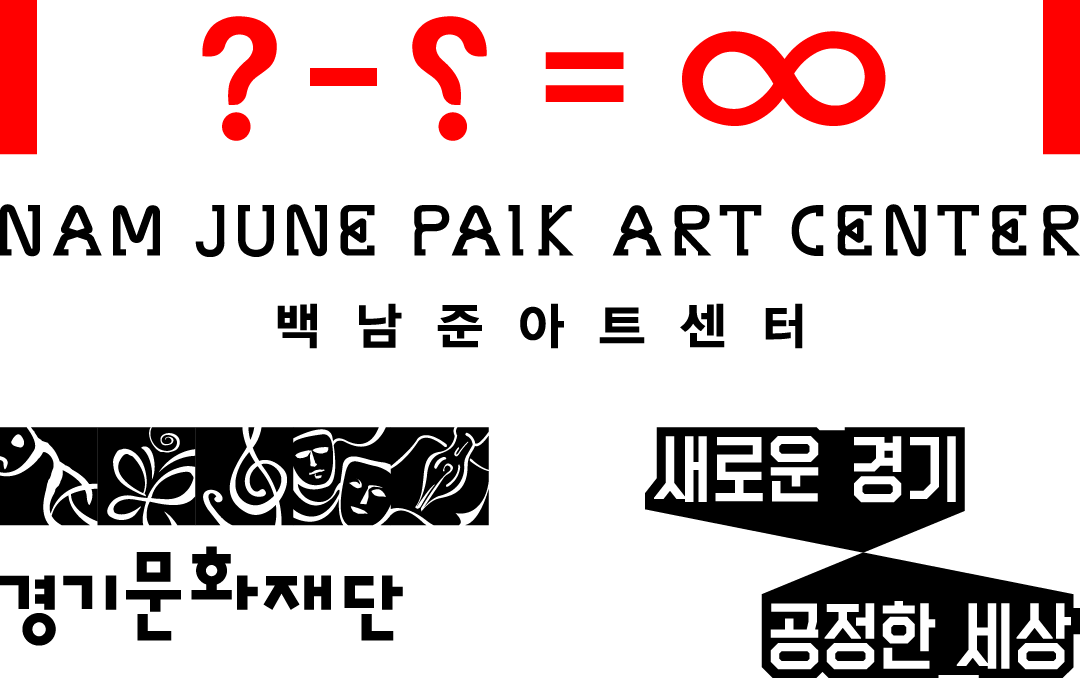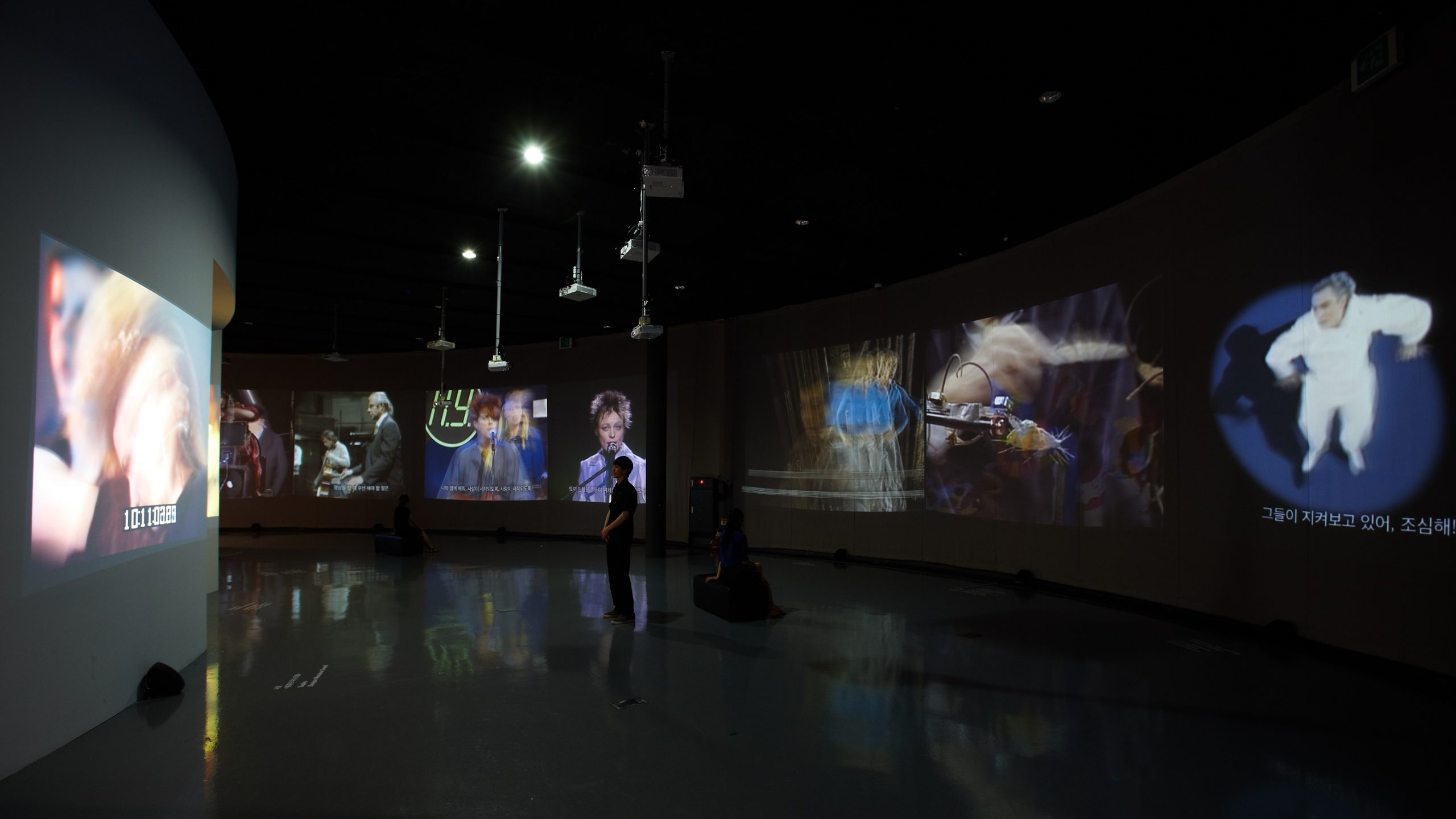
Exhibition
Good Morning Mr. Orwell
Jul 17, 2014 ― Jan 21, 2015
Venue
Nam June Paik Art Center, 1F, 2F
Artists
Lorenzo Bianda, Sompot Chidgasornpongse, Exonemo, Harun Farocki, Finger Pointing Worker, Paul Garrin, Mona Hatoum, Okin Collective, William Kentridge, Kim Taiyun & Yoon Ji Hyun, Lee Boorok, Liz Magic Laser, Jill Magid, Bjørn Melhus, Nam June Paik, Remove Architecture, Song Sanghee
Curators
Ahn Sohyun, Lee Sooyoung
The satellite’s amplification of the freedom of the strong must be accompanied by the protection of the culture of the weak or by the creation of a diverse software skillfully bringing to life the qualitative differences in various cultures.
– Nam June Paik, Art & Satellite (1984)
In 1949, George Orwell published a dystopian novel 1984 depicting a dark future in which surveillance and control by tele-communication become a routine, and made a pessimistic prediction that humans will be controlled by mass media in 1984.
As a refutation of Orwell’s prediction, Nam June Paik said, “You were only half right” and directed the satellite TV show Good Morning, Mr. Orwell to show the positive utilization of mass media by means of art. On January 1, 1984, Paik linked New York and Paris live via satellite in collaboration with around 30 teams, 100 artists and 4 broadcasters and aired music, fine arts, performance, fashion show and comedy that cross the borderline between popular and avant-garde art in real time. Above all, these various genres of arts were edited and displayed on one TV screen. This show was broadcast live in New York, Paris, Berlin, Seoul, etc. and is estimated to have been watched by over 25 million TV viewers.
Now, the year 2014, is the time to look into the eyes of ourselves seeing this positive festival in commemoration of the 30th anniversary of Good Morning, Mr. Orwell. Today’s global networking system using the internet beyond satellite makes both stronger controls and broadened freedom possible. This exhibition is intended to ask about the possibility of making a new node and link to change this network as well as to pose a question of control/freedom that becomes more complicated and secret day by day.
Hosted and Organized by
Nam June Paik Art Center, Gyeonggi Cultural Foundation
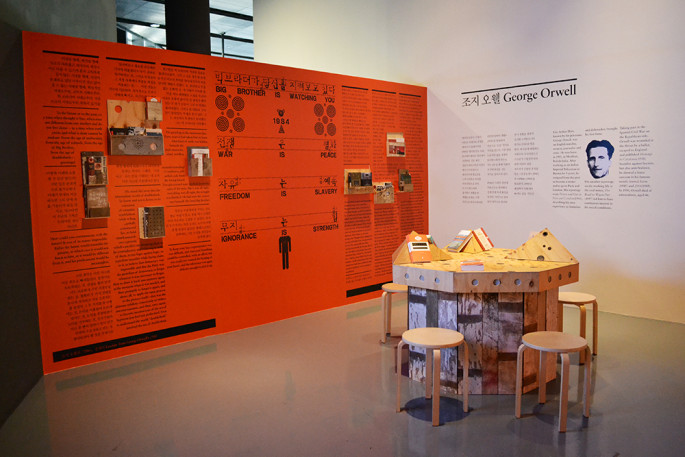
George Orwell Archives

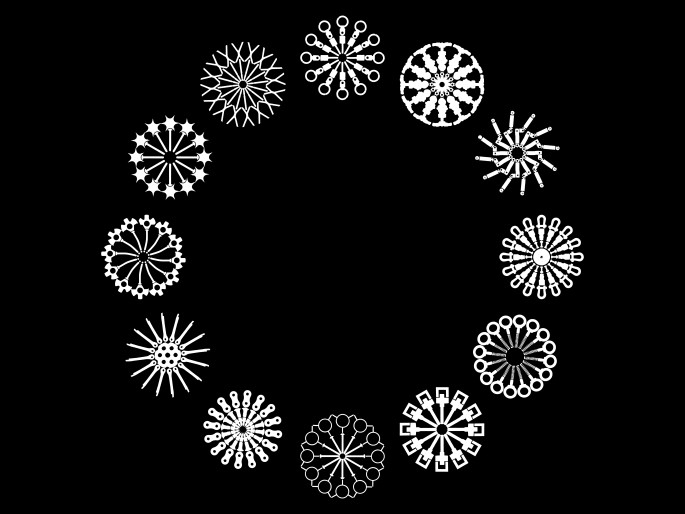
Remove Architecture, Psynopticon

In the Panopticon, which is devised as a model prison allowing a person to observe many people, the most important factor is the ‘psychology’ of a person to be observed. Under the condition of not being able to see the observer, the anxiety that one is being watched by the observer and self regulation become the most effective means of control. This principle of Panopticon is also easily found in our daily life. The artist makes a pattern of Panopticon by using something visible and invisible, and light and shadow. Viewers entering this pattern created by the repetition of the forms of ordinary objects in the form of concentric circle become observers and those being observed at the same time before they know it.
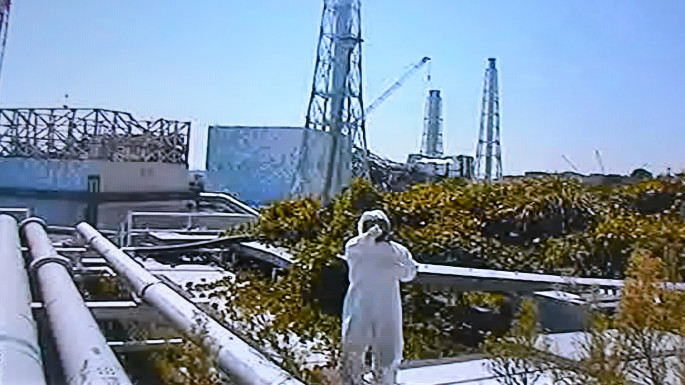
Finger Pointing Worker, Pointing at Fukuichi Live Cam

This video work by ‘Finger Pointing Worker’, an unidentified artist, is a recording of the video images from ‘Fukuichi Live Camera’ installed by Tokyo Electric Power Company to show the sites in real time through the internet at the time of the Fukushima earthquake. The artist went to the site and made a parody gesture of Centers, a representative piece of narcissism by Vito Acconci, in front of the camera transmitting live via internet, wearing the uniform of the nuclear power plant workers. And another artist Kota Takeuchi filmed this scene. By showing aggressive and narcissistic gestures, the artist criticizes the ones who do not realize a critical situation and the situations where the workers are not informed of the danger of the nuclear power plant and their sacrifices are heroized.
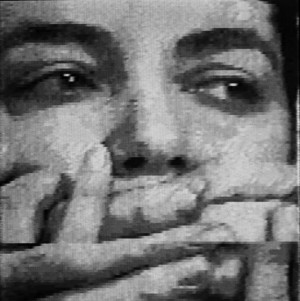
Mona Hatoum, So Much I Want to Say

A man stops the mouth of the artist, who tries to say something, with his hands. Although the video is slow and keeps cutting out, one can continuously hear the voice repeating the title. In this video, performance is recorded utilizing the ‘slow scan’ technique and the images are transmitted to other places via satellite. With the slow scan technology, images are transmitted every 8 seconds, but the sound is transmitted through the telephone lines uninterruptedly. Using the technology to transmit both discontinuous images and continuous sounds to a distant place, the artist shows the energy of resistance to constantly transmit the voice even in the suppressed and limited situations.ir.
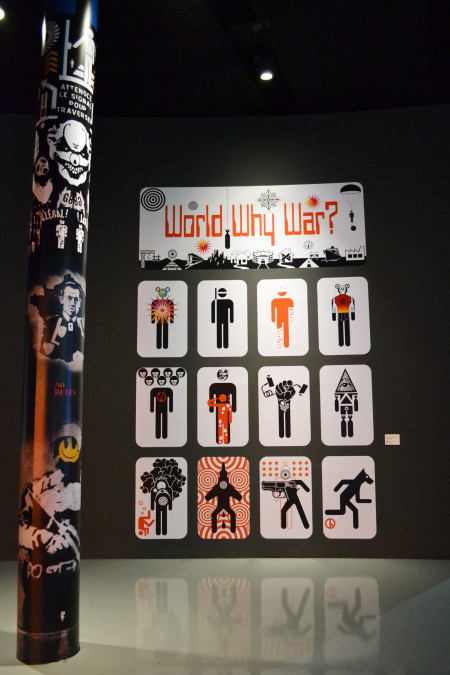
Lee Boorok, Warvata_Sticker Project

Warvata, a compound word of ‘War’ and ‘Avatar’, is composed of pictograms, a pictorial symbol which is easy and clear to recognize for everyone. Since 2005, the artist has worked on the sticker project: he produced Warvata’s pictograms in sticker, distributed or mailed them to people, and then had people put the stickers on the existing signs or images, take a picture of it, and send them back to the artist. The scenes in which war, an extreme tragedy, becomes a common thing that everybody can recognize and it travels all over the world in the form of sticker, which is a capitalistic method of communication to be copied on a large scale, make people feel horrified from the daily routine. However, the process that the images are created by putting the Warvata stickers on a certain space and they come back to the artist one by one proves a sparkling satire and the power of participation.
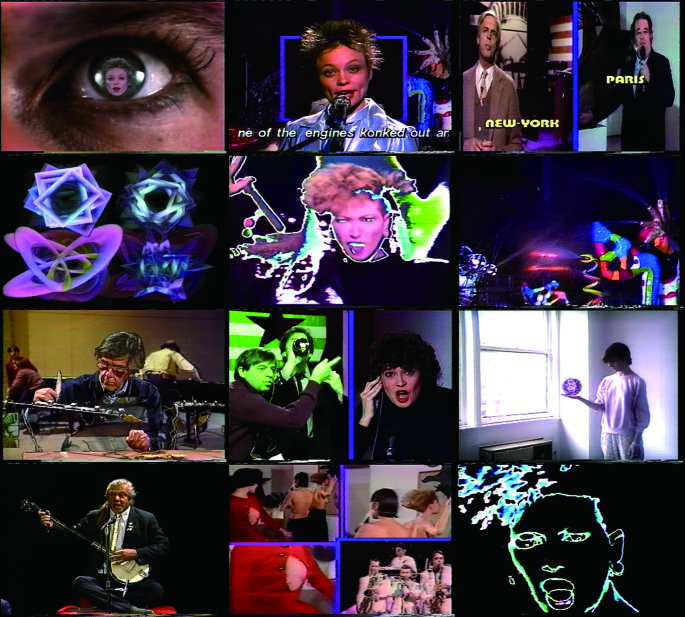
Nam June Paik, Good Morning Mr. Orwell

Good Morning, Mr. Orwell was a live satellite TV show linking New York and Paris. Artists including Laurie Anderson, Allen Ginsberg, Charlotte Moorman and Thompson Twins had a live performance with the show host George Plimpton in New York, while Claude Villers hosted the show in which Sapho, Joseph Beuys, Urban Sax, etc. performed in Paris. Starting from the scene of the two hosts making a toast, a variety of performances made an interactive feedback by giving and taking, and they were melted into one screen. The exhibition Good Morning, Mr. Orwell 2014 displays the main performance pieces in one space for audiences to experience the simultaneous and interactive characteristics of the performance Good Morning, Mr. Orwell.
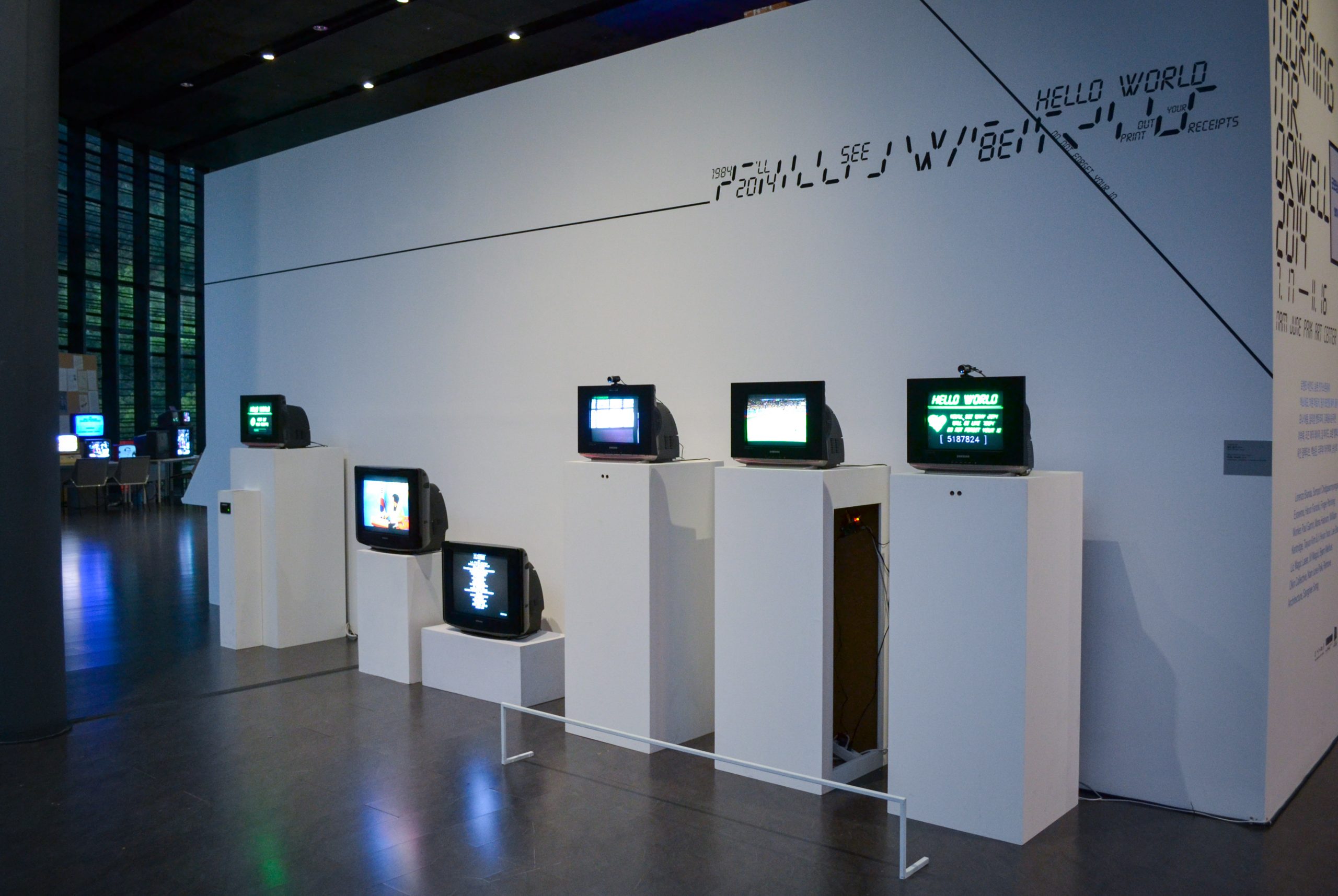
Kim Taiyun & Yoon Ji Hyun, Hello, World!

Kim Taiyun & Yoon Ji Hyun showcase a metadata performance Hello, World! that controls and visualizes the information collected from diverse channels and open the platform for its process to be connected to the exhibition space. By asking questions about the two sides of ‘Big Data’ in today’s world where everyone has his or her own channel, the artists lead the audience to realize how much information is shared and controlled and to manage the information for themselves at the same time.
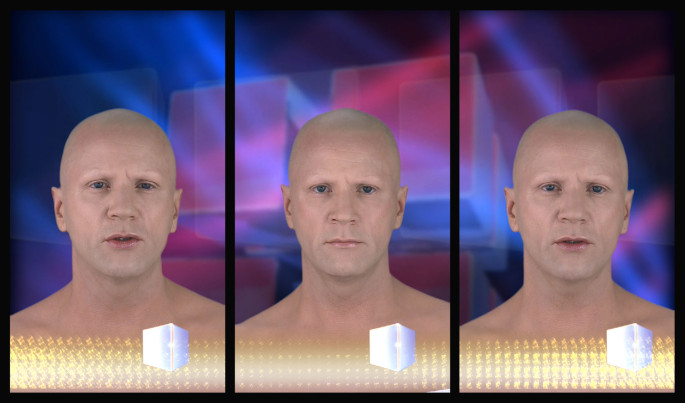
Bjørn Melhus, Deadly Storm

Either by impersonating a typical TV character or by utilizing classic techniques to attract the viewers, Bjørn Melhus expresses the most essential attributes of mass media. In this video, he creates musical rhythms by repetitively editing the words and sounds to emphasize the urgency. The artist takes advantage of the elements of TV, regarding himself as the generation most affected by television while critically analyzing a range of techniques that mass media use for mass manipulation.
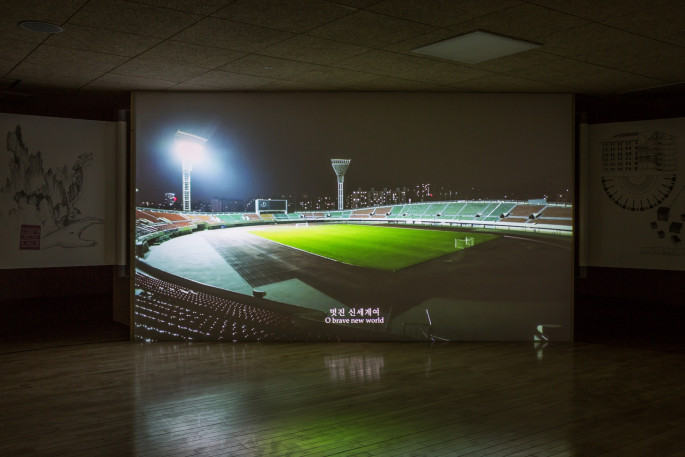
Song Sanghee, Dawn of the Day: The City Dreaming of a Utopia

The views of the city Sanghee Song filmed are familiar but unrealistic, and idealistic but somewhat incomplete. The sentences quoted from dystopian novels such as George Orwell’s 1984 and Aldous Huxley’s Brave New World and so on are overlapped on this unrealistic video. With Messiaen’s Quartet for the End of Time in the background, those that now disappeared and those created while dreaming of a new utopia appear and disappear like the scenes from the dream through the lighting moving on the drawings.
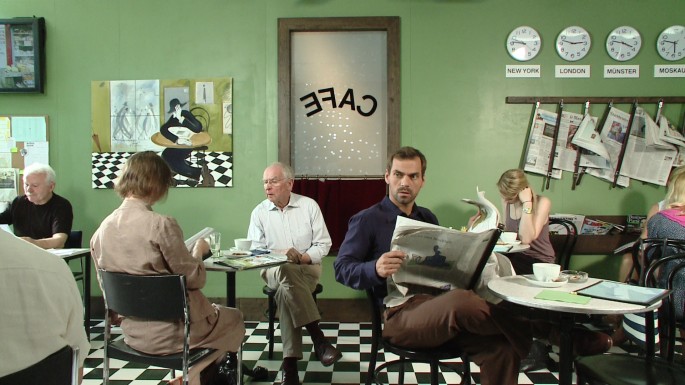
Liz Magic Lazer, PR(Public Relations)

Liz Magic Lazer, who pays attention to the current political and social phenomena, makes performers involved in the sites like movie theaters, street interviews, or broadcast recordings and set the scene for these kinds of situations. A five-channel video installation work PR(Public Relations) to be presented in this exhibition is a kind of post-drama in which one man sitting in a cafe expresses his thoughts and opinions while watching a street interview situation for news. This piece reframes the influences of journalism and its mechanism on the public awareness into performance and video work.
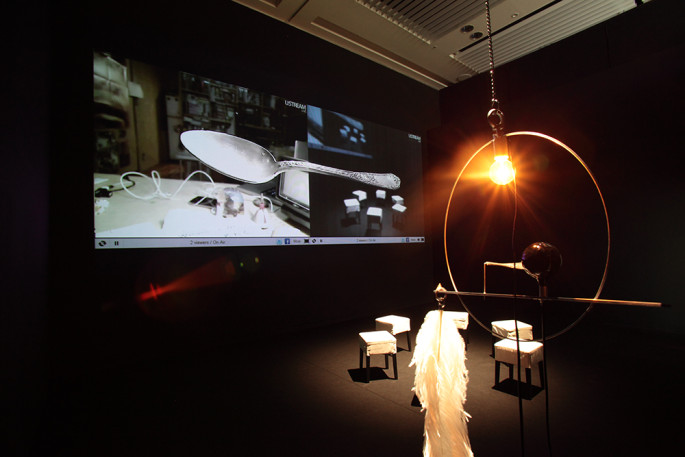
Exonemo, Supernatural

A media artist duo Exonemo, consisting of two artists Sembo Kenseke and Akaiwa Yae, has shown a variety of media extension works including net art, sound video processing, software programming, live performance and installation since 1996. Supernatural is a video installation that sheds new light on the relations between digital and analogue, virtual and real space, and consciousness and unconsciousness in a experimental and humorous way by connecting their studio in Japan and the exhibition space through the internet.
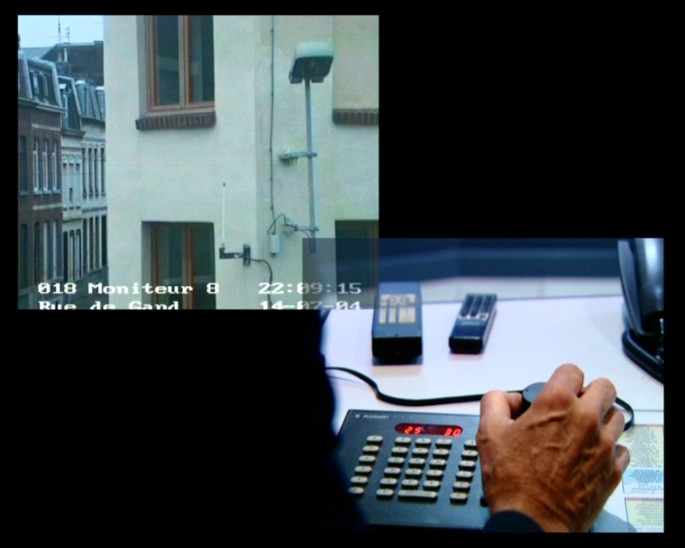
Harun Farocki, Counter-Music

In this video, Harun Farocki, a documentary filmmaker and video artist, shows the relationship between today’s city and visual media through a parody of Dziga Vertov’s Man with a Movie Camera, a classic in film history. The scenes of many European cities come from the functional video images shot for security cameras, city planning, and traffic system management, etc. The artist creates a video essay by rhythmically editing these functional images and adding the phrases that contain philosophical reflection on city and sharp eyes on social network to it.


